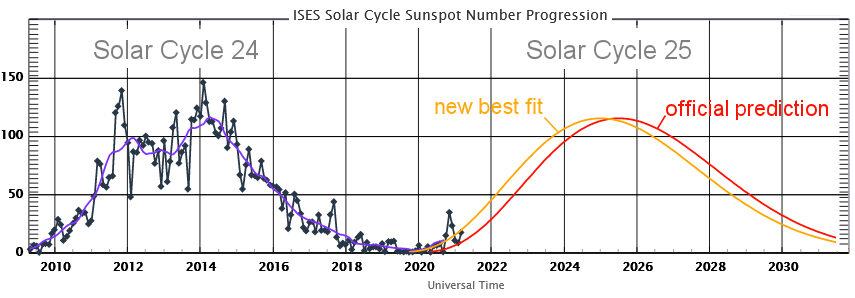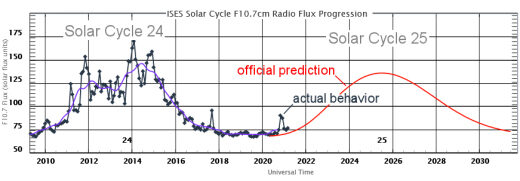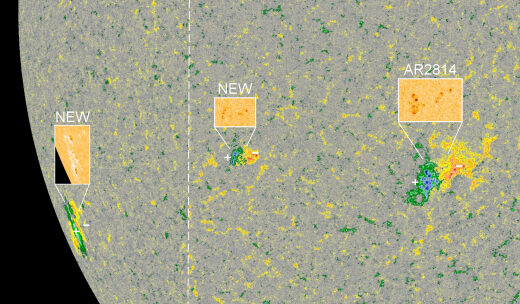You probably think Solar Cycle 25 is a dud. Think again. Despite long stretches of spotless quiet, the new solar cycle is actually running ahead of schedule. In this plot, the red curve shows NOAA's predicted sunspot counts for Solar Cycle 25; the orange curve shows the new best fit:
"The sun is performing as we expected--maybe even a little better," says Lisa Upton of Space Systems Research Corporation. She's a co-chair of the NOAA/NASA Solar Cycle 25 Prediction Panel. "In 2019, the panel predicted that Solar Cycle 25 would peak in July 2025 (± 8 months) with a maximum sunspot count of 115 ± 10. The current behavior of the sun is consistent with an early onset near the beginning of our predicted range."
If current trends hold, Solar Cycle 25 could peak as early as 2024, similar in strength to the relatively weak cycle (SC24) that preceded it. Don't be fooled by the adjective, however. It's like hurricane season. Even a "weak" season produces hurricanes--and all it takes is one good storm to do a lot of damage.
Comment: Indeed, particularly with our planet's weakening magnetosphere: A warning from history: The Carrington event was not unique
"I'm not surprised that people are grumbling about SC25 being a dud," says Upton. "Weak cycles are typically preceded by long stretches of spotless days, and they are slow to ramp up. All of this is consistent with our prediction."
Now the waiting begins. As sunspot counts increase over the next year, forecasters will be able to tell if Solar Cycle 25 is *really* following the official prediction or doing something completely different. Predicting the solar cycle is still an infant science, and much uncertainty remains. Stay tuned.
SOUTHERN SUNSPOT ACTIVITY
The sun's southern hemisphere is showing signs of life. Three sunspots are growing there. Their dark cores are inset in this surface magnetogram from NASA's Solar Dynamics Observatory:
The +/- magnetic polarity of all three spots marks them as members of new Solar Cycle 25. The young solar cycle has been struggling to produce sunspots, so three at once is a notable uptick in activity. If their growth continues apace, the two new sunspots may receive official designations AR2815 and AR2816 later today.






[Link]
have a wonderful sunny day!